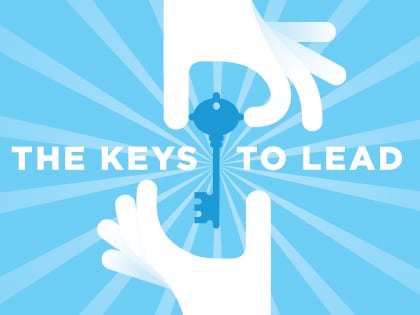One “Key” Strategy to Help Your Church Grow Young Today
Remember your first set of keys?
Stephen—who goes by “Stretch”—received his first set of keys when he was 16. His town handed him a driver’s license and his parents handed him the keys to the family car. Heart pounding with excitement, he climbed behind the wheel and pulled out of his driveway for the first time on his own. Stretch couldn’t believe the newfound freedom and responsibility he had been given. He was taking a step away from childhood and a step closer to adulthood.
Stretch pulled onto the street and decided to drive to his church. As he pulled into the parking lot, the church’s childcare was wrapping up for the day. One of the leaders who knew Stretch noticed him driving. Given a recent shortage of childcare workers, she asked if he was interested in helping after school.
She was only halfway through the question before Stretch knew his answer. He would get to hang out at the church, spend time with kids and on top of it all … he would get paid. This day couldn’t get any better!
Until a few minutes later, when she returned from the church office and handed him a key to the church. “If you’re going to help us, there will be times when we need you to lock up,” she explained. Stretch was staring so intently at the key that he barely heard her words. The pastor had this key. His Sunday school teacher had this key. Other adults who were mature—who had power—had this key. But him? It was like he had been waiting on the sidelines during the big game and was now being called onto the playing field.
A week later, while Stretch was working in the childcare center, the youth pastor dropped by. “You know, Stretch,” he said, “if you have your license and are already at the church, would you be willing to stock the soda machine for me? The job comes with all the Mountain Dew you can drink.”
Key to the car. Check.
Key to the church. Check.
Key to the soda machine. Check.
What’s more, later that night, standing alone in the empty church, Stretch sensed a clear call from God to ministry. What other key could he possibly need?
A lot happened for Stretch that week. Leaders he deeply respected had entrusted him with access and authority by giving him keys, both literally and figuratively. In the decades that followed, others continued to entrust him with the keys of leadership, and he shared with our team that it’s the reason he’s now been in ministry—and empowering young people—for over 20 years.
Churches that grow young are brimming with staff, volunteers and parents who demonstrate what we describe as keychain leadership. Whoever holds the keys has the power to let people in or to keep people out. Keys provide access not only to rooms, but also to strategic meetings, significant decisions and central roles. The more power you have, the more keys you tend to possess.
By keychain leaders, we mean pastoral and congregational leaders who are:
1. Acutely aware of the keys on their keychain, and
2. Intentional about entrusting and empowering all generations, including teenagers and emerging adults, with their own set of keys.
Practicing Keychain Leadership
Beyond simply launching a student leadership team in your church’s youth ministry, keychain leadership is a spirit and commitment that permeates every area of the church.
The great news is that you are probably already closer than you think to keychain leadership. With just a few intentional decisions, you can increase your ability to pass off keys to others.
Based on our research, we’ve identified four types of key leadership ranging from key-less leaders to keychain leaders. Take a moment to place yourself and others on your staff or volunteer team on this continuum. There are four types of key leadership in churches:
1. Key-less leaders: Often young and inexperienced, without much authority or access, their time is spent proving they’re worthy to possess keys. This could be a high school student ready to volunteer in the children’s ministry—full of potential and passion as he begins his leadership journey. It may also represent an older congregant who feels as though she lost access to keys—and her voice in the church—a decade or two ago.
2. Key-hoarding leaders: Always holding the keys and refusing to give others access, they run the show. This might include an outgoing, extroverted ministry leader who draws a crowd through sheer personality and ends up driving away others who offer to help (we won’t ask you to name any names, but would wager you could name a few leaders in this category pretty quickly).
3. Key-loaning leaders: Often taking keys off the keychain and letting others borrow them temporarily, they make sure the keys are returned quickly. One example might be a pastor of a fast-growing church plant who knows the contribution of others is important—but also believes others won’t do as good of a job as he or she will.
4. Keychain leaders: Very aware of the keys they hold, they are constantly opening doors for some while training and entrusting others who are ready for their own set of keys. This could be a longstanding senior leader, associate pastor or trusted volunteer who young people, staff and congregation members turn to for advice or to be sharpened in their ministry skills. Everyone seems to get better when this leader is involved, and a long list of people can point to this leader as the reason they serve in the church today.

